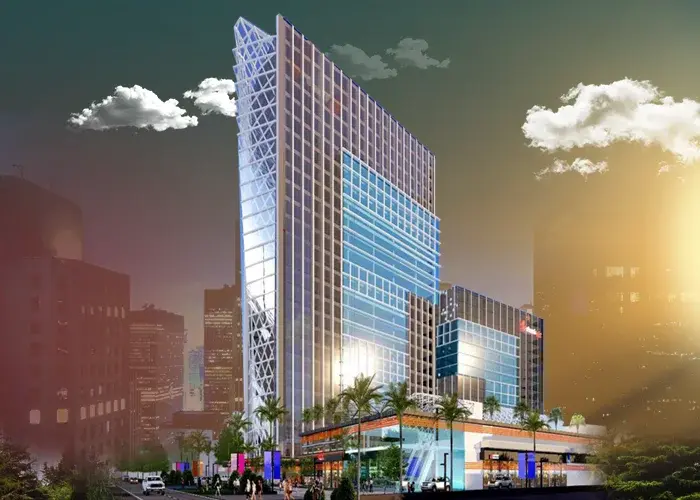
Most real estate businesses are staring at the wrong things right now. National headlines, interest rate predictions, broad market reports none of that tells you where the actual deals are. The real money sits in neighbourhood-level data that almost nobody’s paying attention to. Companies figuring this out are closing deals left and right while their competitors wonder what happened.
Markets in 2026 don’t look anything like what we saw five years ago. Neighbourhoods that used to follow predictable patterns are doing completely unexpected things. Some areas are blowing up overnight. Others that seemed hot six months ago are cooling fast. If you’re not tracking this closely, you’re already behind.
Smaller Cities Keep Pulling People Away
The move toward smaller cities isn’t stopping. Remote work changed the game permanently. People realised they don’t need to sacrifice half their paycheck to live near expensive downtown offices. Mid-sized markets with lower costs and better living are seeing waves of new residents.
Cities between 100,000 and 500,000 people are growing steadily. They’ve got decent schools, jobs that actually pay, and housing you can afford without going broke. Real estate pros setting up shop in these markets now will make banks over the next few years.
Commercial real estate always follows residential. Businesses are opening new locations in these growing cities, offices, retail, restaurants, and services. Get in early and you’ll own huge chunks of market share.
Mixed-Use Is Just How Neighbourhoods Work Now
Single-use neighbourhoods where everything shuts down at 5 PM? Nobody wants that anymore. People want to walk places. Coffee shop downstairs, office around the corner, grocery store two blocks away. Mixed-use went from trendy to expected faster than anyone predicted.
These developments pack homes together with shops, offices, restaurants, and fun stuff to do. Young professionals love it. Families appreciate not driving everywhere. Even older buyers like having things nearby and walkable.
Values in mixed-use areas work differently from traditional neighbourhoods. They appreciate different timelines. The comparable sales don’t match up the same way. Marketing has to sell the lifestyle, walkability, community events, and everything nearby, not just bedrooms and bathrooms.
Developers are getting creative with what they include. Coworking spaces in the building. Community gardens on the roof. Event venues that residents can book. These extras drive prices up, and properties sell way faster.
Smart Tech Stopped Being Optional
Buyers expect smart home features now as baseline equipment. Properties without them look outdated and sell for less. Smart thermostats, security cameras, doorbell alerts, and app-controlled lights are all standard stuff now.
Listings highlighting tech features get way more showings. Buyers research smart capabilities before they even visit properties. You need to understand these systems well enough to answer detailed questions. “It has smart stuff” doesn’t cut it anymore.
Whole neighbourhoods are going smart, too. Shared EV charging for the community. Integrated security watching all the streets. Apps connecting neighbours. Community-level tech influences decisions just as much as what’s inside the house.
Builders putting smart tech in from day one have a huge advantage. Retrofitting older places works okay, but houses designed around smart systems work better and cost less to set up.
Climate Stuff Is Front and Centre Now
Buyers ask about environmental risks upfront now. Flood zones, wildfire areas, extreme heat, hurricane exposure, all of it matters. They’re researching this before making offers and walking away when risks look too high.
Energy-efficient properties sell faster and for more money. Solar panels, good insulation, efficient heating and cooling add value that appraisers actually count. Green certifications that used to be marketing fluff now move prices.
Insurance costs are crushing some markets. Coastal areas and wildfire zones are seeing premiums so high that monthly ownership becomes unaffordable for regular buyers. This is shrinking buyer pools and pushing prices down in affected areas.
You can’t dodge environmental questions anymore. Buyers want flood history, climate features, and realistic insurance estimates. Trying to avoid these conversations loses deals fast. Better to address everything up front.
The smart move? Specialise in properties with strong environmental profiles. Market the energy savings, resilience features, and lower insurance. Position these as future-proof investments. Watched buyers pay $30,000 more for houses with solar and good insulation just to avoid insurance and utility cost problems.
Homes Need to Do More Things Now
How people use houses has changed for good. Properties need flexibility now. Real home office space with proper setup, rooms that work for different purposes, outdoor areas where people can actually work, these aren’t extras anymore.
Layouts supporting different activities appeal strongly. Open floor plans still work but need defined zones for focused work. Nobody wants video call backgrounds showing their kitchen mess or kids running around. Homes adapting to different needs hold value better.
Properties built for flexibility command premium prices and move faster. Developers are putting adaptability into designs of movable walls, flexible electrical spaces that can be converted between uses easily.
Local Data Matters More Than Anything
National reports tell you general directions. Regional data adds context. Neighbourhood-level, street-by-street information shows where opportunities actually exist. Pricing patterns, inventory levels, buyer behaviour, development plan, this granular local stuff matters infinitely more than broad metro-area statistics.
Winning businesses invest heavily in detailed local analysis. Track changes block by block. Understand micro-trends that don’t show up in city-wide reports. Monitor every development project that might shift dynamics. Businesses mastering this granular data will absolutely crush competitors using monthly regional reports.
Data tools keep improving. Software crunches numbers and spots patterns. But tech alone doesn’t work. Understanding what patterns mean for specific clients and particular properties takes real experience from years of active work.
Businesses treating local market intelligence as core expertise will dominate in 2026. They invest in tools, train people on analysis, and build systems turning data into actionable advice..
Most Businesses Are Still Stuck in 2020
Some real estate operations haven’t changed anything. Same marketing, same buyer profiles, expecting markets to behave like they always did. That stops working right about now.
The trends shaping 2026 aren’t temporary blips. These are fundamental shifts in how people think about homes, work, communities, and risks. Businesses adapting everything—services, expertise, marketing will thrive. Those waiting for “normal” to return will struggle hard.
Getting Positioned for What’s Coming
Markets in 2026 reward businesses preparing right now. Understanding these trends creates advantages that translate into closed deals and happy clients. Companies adapting based on actual shifts will capture disproportionate market share.
The opportunity sits right there, obvious to anyone paying attention. Markets are shifting in ways that create clear openings for businesses ready to act. Whether working with buyers, sellers, investors, or developers, those who understand local trends will close way more transactions and build much stronger relationships.
Study local markets intensively now. Invest in proper intelligence tools. Develop real expertise in emerging trends. Businesses doing this work today will lead tomorrow while competitors scramble to catch up. These trends will shape 2026. The question is whether you’re ready for what’s already starting. For more insights on Local Real Estate Market Trends, contact SmartKey Realty.




